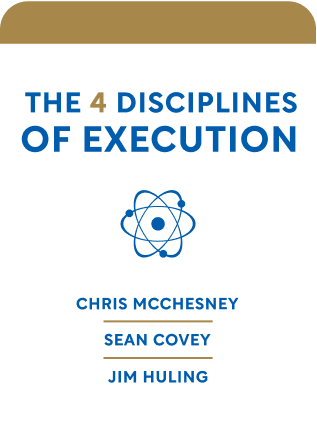

This article is an excerpt from the Shortform book guide to "The 4 Disciplines of Execution" by Chris McChesney, Sean Covey, and Jim Huling. Shortform has the world's best summaries and analyses of books you should be reading.
Like this article? Sign up for a free trial here .
Are you trying to figure out what goals to set? Do you need examples of wildly important goals?
For wildly important goals, examples will vary depending on who is setting the goals. See some examples through the lens of a case study at a fictional book production department.
Read on for more about wildly important goals, examples of these goals, and the context of a case study.
Wildly Important Goals: Examples for Discipline 1
Each implementation section, throughout the whole summary, will reference the experience of the production department of a publishing house.
Maria is the leader of the production department of a large publishing house. When the publishing house started implementing 4DX, the senior leaders came up with this overall WIG: “Decrease costs from $1 million to $800,000 by the end of the year.”
The production department (and all the other departments of the publishing house) brainstormed team WIGs that would support the overall WIG. Maria and her team came up with a list of ideas for wildly important goals, examples include:
- Reduce the need for outside help such as freelance designers and photographers
- Reduce the number of at-press changes (once the printer has set up files, there’s a charge per changed page)
- When purchasing stock images, avoid the more expensive rights-managed agencies
Assessment
Maria and her team calculated the possible savings of all their ideas. Maria now knew which WIG would reduce costs most in her department, but she was looking for a WIG that would have the greatest contribution to the entire publishing house. At-press changes were not only expensive, they also caused a delay. When books printed a week later than scheduled, the marketing department had to pay for rush rather than regular shipping to ensure books made it to events on time. Marketing would also benefit from the stock image idea. Every time a rights-managed image is used, there’s a fee. If book covers used royalty-free images instead, marketing could then reuse the image in press kits and promotion materials without any additional cost.
Testing
Maria and her team tested all their ideas and chose to reduce at-press changes. This supported the overall goal, was easy to measure, didn’t depend on other teams, and the results were team-driven.
Statement
Maria and her team came up with this WIG: “Decrease costs for at-press changes from $4000 to $1000 by the end of the year.”
Discipline 2 and WIGs
Brainstorming
Maria and her team brainstormed many possible lead measures for their wildly important goals, examples include:
- Create a pre-press checklist to catch the most common errors
- Find printers that don’t charge for at-press changes
- Ask the author to do a final review of the book files
- Run preflight software on book files before sending to press
- Ask another staff member to look over files before submission
- Create a consistent file-naming convention so no one accidentally submits the wrong file
Assessment
Maria and her team narrowed their ideas down to these top three:
- Create a pres-press checklist. Many of the at-press changes were the same mistakes in different books.
- Run preflight software. Software would catch errors not easily visible to the eye.
- Create a consistent file-naming convention. When book files didn’t have version numbers, it was difficult to tell which file was the final version.
Testing
The production department’s lead measures passed all the tests.They were predictive, influenceable, maintainable, team-driven, measurable, and didn’t create any negative side effects. While testing, the department realized that it would be easier to remember to run preflight software if it was part of the checklist, so they combined those two measures.
Statement
The production department settled on the following lead measures:
- Each team member renames files for two books per week
- Complete the pre-press checklist for 90% of files sent to press
Wildly Important Goals: Examples of Tracking in Discipline 3
Formatting
Maria and her team used a trend line to show the difference between their goal costs and their current costs:
They added a chart for lead measure 1 (renaming book files) that tracked weekly individual performance:
Lead Measure: Each team member renames files for two books per week
| Team Member | Week 1 | Week 2 | Week 3 | Week 4 |
| Craig | 2 | 2 | 4 | |
| Emiko | 2 | 2 | 4 | |
| Harriet | 1 | 2 | 2 | |
| May | 2 | 1 | 2 | |
| Raoul | 1 | 3 | 3 | |
| Fred | 2 | 2 | 3 |
They added a bar graph for lead measure 2 (completing the checklist):
Testing
Maria and her team evaluated the board against the criteria. The board is simple—it has only three parts. The design is visible—the graphs are visually clear and well-labeled. The board is complete—it shows the WIG, lag, and lead measures, and it’s obvious at a glance if the team is winning or losing.
Creation
Maria’s team made their scoreboard using book design software and printed it poster-size. They decorated it with images from their favorite books.
Scorekeeping
Each team member records the number of files they rename per week. Maria trusts them, but periodically audits them to make sure the scores they write on the board match what they’re actually doing. The team only wins if everyone performs.
Discipline 4 and Accountability on WIGs
Scoreboard Review
In the examples of wildly important goals at this point, Maria might say something like, “Congratulations to Craig and Emiko, who both exceeded this week’s lead measures by renaming four book’s files this week.”
Leader
Maria might say something like, “Last week I committed to getting approval to purchase preflight software. I got the approval. Next week, I commit to running two 20-minute training sessions on the software.”
Team Members
Emiko might say something like, “Last week I committed to having a 15-minute phone conversation with the color specialist at our printer in Malaysia. I learned some photoshop tips that will help us improve the brightness of our images, so we won’t have to make changes to dull-looking photos at press. This week, I’ll have a 15-minute conversation with the greyscale expert at our printer in India.”

———End of Preview———
Like what you just read? Read the rest of the world's best book summary and analysis of Chris McChesney, Sean Covey, and Jim Huling's "The 4 Disciplines of Execution" at Shortform .
Here's what you'll find in our full The 4 Disciplines of Execution summary :
- The 4 disciplines that can make any strategy a successful reality
- Why a great plan falls apart when you don't think adequately about execution
- The 6 steps you need to scale the 4DX model across an entire organization






